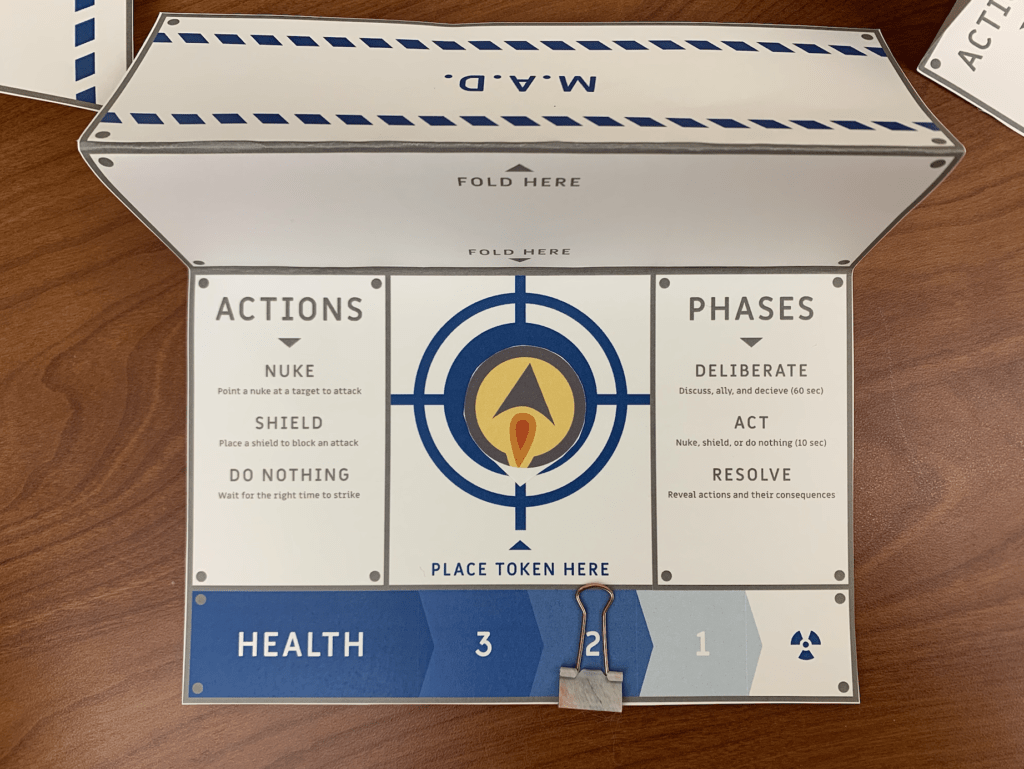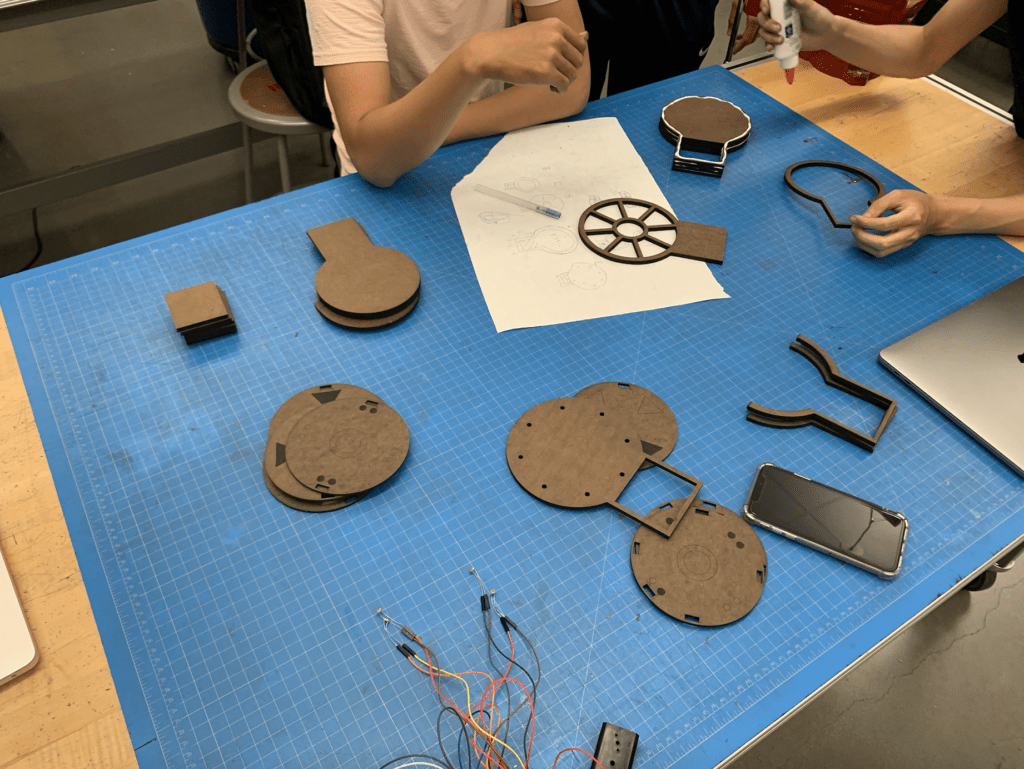Before I took this class I thought games were simply a means for people to have fun. Although that statement has not changed, the methods to achieve that fun, and what fun actually means have dramatically changed after this class. I’ve learned about different types of fun and numerous tools that game designers employ to bring the fun to the players. I learned about catering to different target audiences, weaving narratives into games, and balancing game mechanics. I learned that beyond just having fun, games could be used for team bonding, telling stories, and evoking emotions.
The class concepts that stuck with me the most was giving information when the user most needed it and not relying on their memory. I implemented this into my work by designing game pieces that contained the rules on it themselves instead of centralizing all the information in the game manual. Our design for project 1 featured action cards for each user that displayed the actions that the user could take in a simplified format.

Another class concept that I particularly enjoyed was the material on tutorials, especially the talk on Plants vs Zombies. Much of it seemed very logical from a design standpoint, yet many people miss the mark. I didn’t a chance to implement that learning in my work, however, as it was not applicable to our escape room game.
Challenges that I experienced along the way was finding a way to produce the physical game pieces. As a result, this class opened up opportunities for me to go to the PRL to design and produce game pieces on the laser cutter, a valuable skill that I can use in the future for other engineering classes.

On top of that, working in a physical space presented its own challenges. Much of the space was hard to picture offsite, which made decorating the room to fit the ambience difficult. However, through our final playtest, we learned important lessons on prop arrangement and creating adaptive hints for the escape room. Ultimately, I learned the importance of getting user feedback at every step of the design process and how valuable that feedback is especially when playtests were conducted well and people were willing to give their candid advice. I also learned how to take criticism even when it hurt sometimes and apply it to the next iteration.
Therefore, next time I will take these lessons into account when I’m designing games that involve physical space and puzzles. I hope that as I continue into my design career, I can take what I learned in game design and apply it to other fields like inclusive design and interaction design for technology products. The iterative cycle of user feedback and testing is something that I will bring with me in any client-facing job I have in the future.


